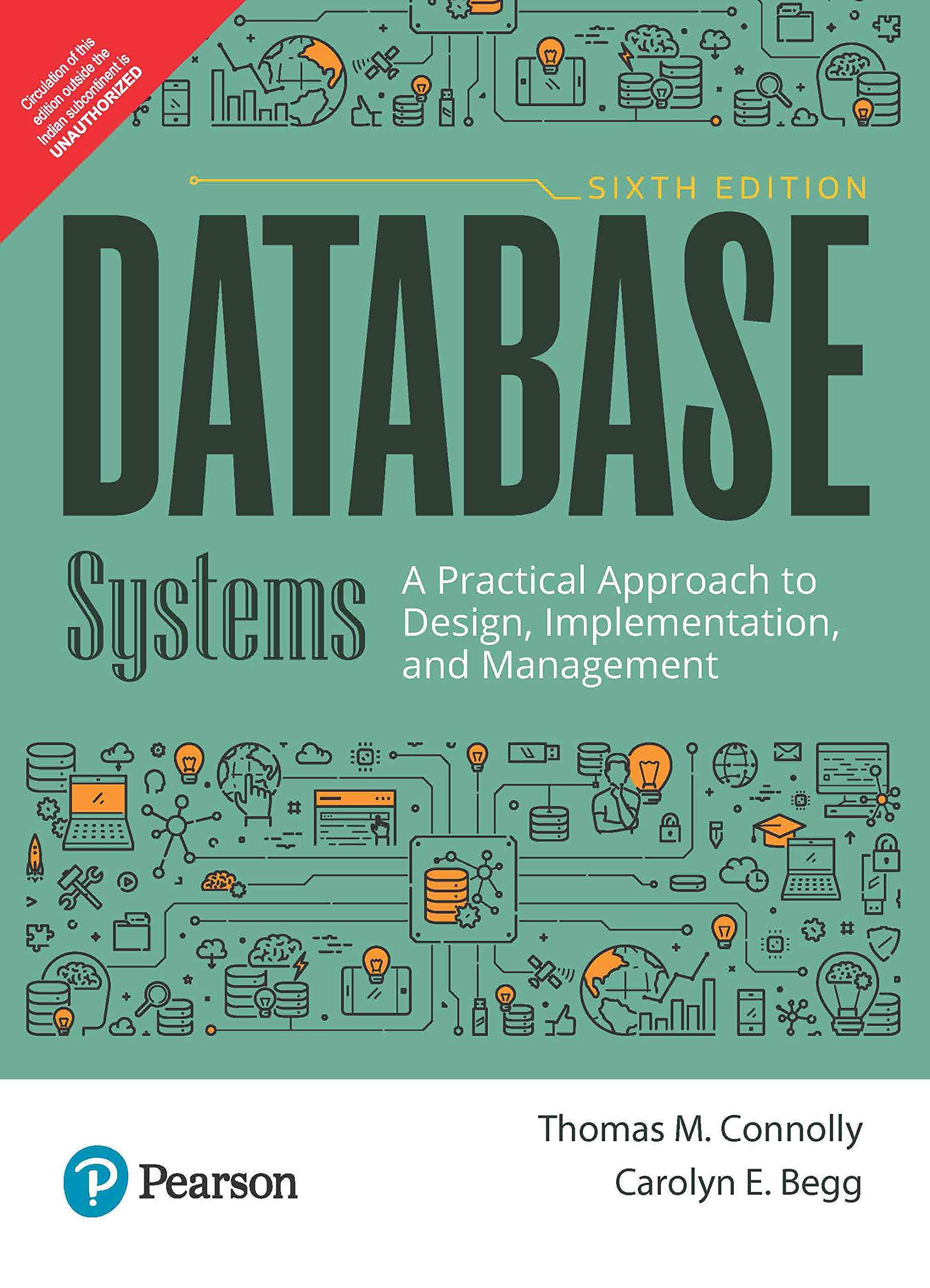Question
Chapter 10 Trees Data Structures and Other Objects Using C++ by Michael Main and Walter Savitch 11. Suppose T is a binary tree with 14
Chapter 10 Trees
Data Structures and Other Objects Using C++ by Michael Main and Walter Savitch
11. Suppose T is a binary tree with 14 nodes. What is the minimum possible depth of T?
? A. 0
? B. 3
? C. 4
? D. 5
12. Select the one FALSE statement about binary trees:
? A. Every binary tree has at least one node.
? B. Every non-empty tree has exactly one root node.
? C. Every node has at most two children.
? D. Every non-root node has exactly one parent.
13. Consider the binary_tree_node from Section 10.3. Which expression indicates that t represents an empty tree?
? A. (t == NULL)
? B. (t->data( ) == 0)
? C. (t->data( ) == NULL)
? D. ((t->left( ) == NULL) && (t->right( ) == NULL))
14. Consider the node of a complete binary tree whose value is stored in data[i] for an array implementation. If this node has a right child, where will the right child's value be stored?
? A. data[i+1]
? B. data[i+2]
? C. data[2*i + 1]
? D. data[2*i + 2]
15. How many recursive calls usually occur in the implementation of the tree_clear function for a binary tree?
? A. 0
? B. 1
? C. 2
16. Suppose that a binary taxonomy tree includes 8 animals. What is the minimum number of NONLEAF nodes in the tree?
? A. 1
? B. 3
? C. 5
? D. 7
? E. 8
14
/ \
2 11
/ \ / \
1 3 10 30
/ /
7 40
17. There is a tree in the box at the top of this section. What is the order of nodes visited using a pre-order traversal?
? A. 1 2 3 7 10 11 14 30 40
? B. 1 2 3 14 7 10 11 40 30
? C. 1 3 2 7 10 40 30 11 14
? D. 14 2 1 3 11 10 7 30 40
18. There is a tree in the box at the top of this section. What is the order of nodes visited using an in-order traversal?
? A. 1 2 3 7 10 11 14 30 40
? B. 1 2 3 14 7 10 11 40 30
? C. 1 3 2 7 10 40 30 11 14
? D. 14 2 1 3 11 10 7 30 40
19. There is a tree in the box at the top of this section. What is the order of nodes visited using a post-order traversal?
? A. 1 2 3 7 10 11 14 30 40
? B. 1 2 3 14 7 10 11 40 30
? C. 1 3 2 7 10 40 30 11 14
? D. 14 2 1 3 11 10 7 30 40
20. Consider this binary search tree:
14
/ \
2 16
/ \
1 5
/
4
Suppose we remove the root, replacing it with something from the left subtree. What will be the new root?
? A. 1
? B. 2
? C. 4
? D. 5
? E. 16
Step by Step Solution
There are 3 Steps involved in it
Step: 1

Get Instant Access to Expert-Tailored Solutions
See step-by-step solutions with expert insights and AI powered tools for academic success
Step: 2

Step: 3

Ace Your Homework with AI
Get the answers you need in no time with our AI-driven, step-by-step assistance
Get Started


